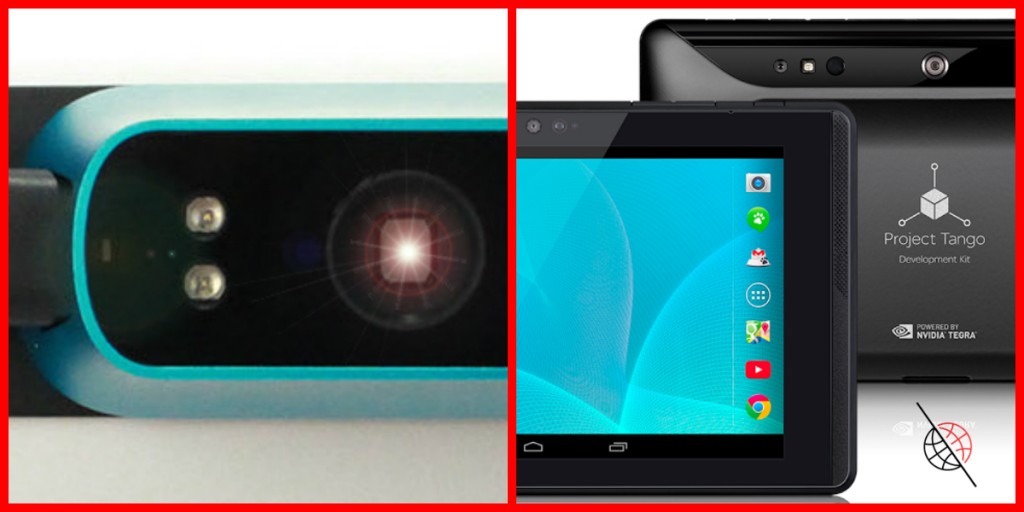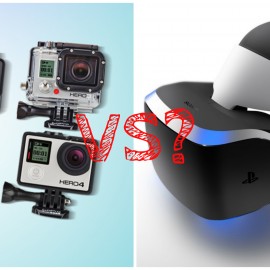Occipital’s Structure Sensor and Google’s Project Tango, the Future of AR/VR Content.

I’m late to the game with these two amazing products/projects as they both launched almost two years ago. Nevertheless, I feel compelled to write about Google’s Project Tango and Occipital’s Structure Sensor, two projects leading the way in 3D scanning. That might not sound exciting, oh but it is. This technology is very compelling and has the capability of literally propelling Augmented (AR) and Virtual Reality (VR) to a whole new level (interested in AR/VR? Read my guide for non-techies).
Until now, 3D scanners were largely tools for professionals – they were industrial grade, expensive, relatively large and required complicated software. Tango and Structure Sensor have both found a way to squeeze this technology into small peripherals or as components in everyday devices like tablets and smartphones.
Both products map spaces and objects using 3D depth sensors via infrared. The applications of this technology are limitless, from indoor mapping to gaming. Imagine walking through your house and creating a detailed map of everything. You can explore the same space years later or create a VR game set in your living room. Perhaps the most compelling are uses for mixed reality. Mixed reality is the meddling between augmented reality and virtual reality. One’s real surroundings are superimposed with interactive virtual objects.
Mapping your environment enables virtual objects to interact with your unique environment. Words do not do this technology any justice. Watch the promos below and comment.
Structure Sensor: Structure.io
California-based Occipital, Inc. launched the Structure Sensor by way of Kickstarter in 2013 and smashed their $100k goal by about $1.2mil. Structure Sensor attaches to an iPad with a reasonably stylish bracket and scans a space or object using an infrared laser that projects dots; this is called structured light. An infrared sensor then measures the distortions in the light (dots or pixels) to measure distance (depth). It pairs with the iPad camera to capture the image of the space or object. The result is a realistic rendering of a object or space in 3D.
This isn’t a new concept, in fact, some of the components housed on the Structure Sensor were used in Microsoft’s Kinect. The significant difference between the Kinect and professional sensors, and this sensor is its size and SDK. Occipital wants their sensor to integrate into all types of hardware. They recently launched Structure Core, which is capable of high-performance depth sensing as an embedded component. Structure Core can be built-in just about any device. Occipital hopes to see this sensor pop up in tablets, VR/AR headsets, robots, and phones.
Project Tango: Google.com/ATAP
Google’s Project Tango was born from their Advanced Technology and Projects (ATAP) group. The original prototype was a smartphone, but the most recent iteration comes in the form of a tablet. Tango essentially functions the same as the Structure Sensor by casting infrared dots over a given area or object. The significant difference between Structure Sensor and Tango is that Google’s version is a full platform and being developed for Android. So it has the traditional tablet and smartphone sensors that pair with the 3D mapping. Google is essentially taking the Structure Sensor tech to the next level by making it consumer ready. In many ways, this is exactly what the makers of Structure Sensor wanted. BUT I don’t know if they are happy with Google jumping into this space. I’m sure some intellectual property implications might be ruffling feathers, but that’s way over my head. Just watch the video and enjoy how competition drives innovation.
What are your thoughts on these products? Do you have one or both? Developers, which platform do you prefer? Why?



Can’t wait to see more VR apps. This is an exciting time!